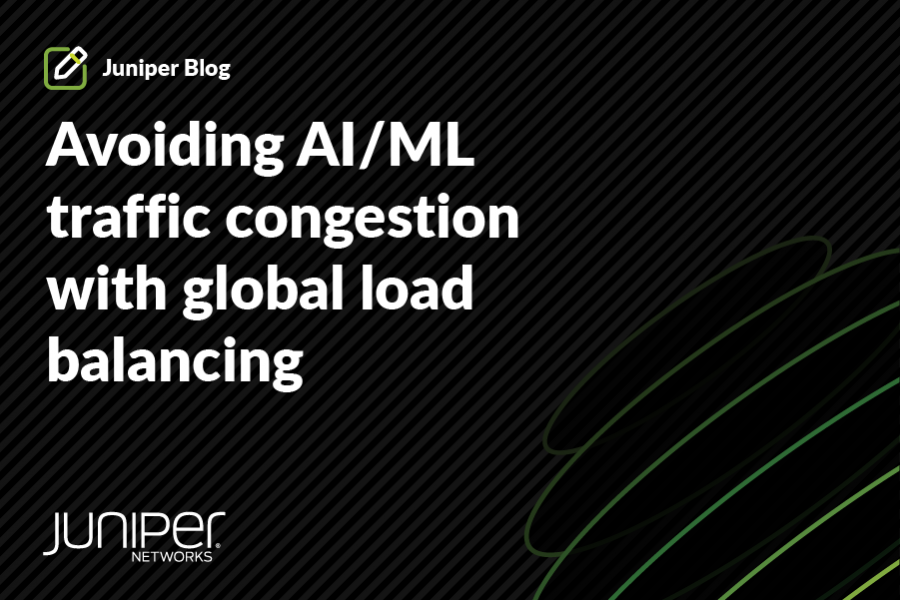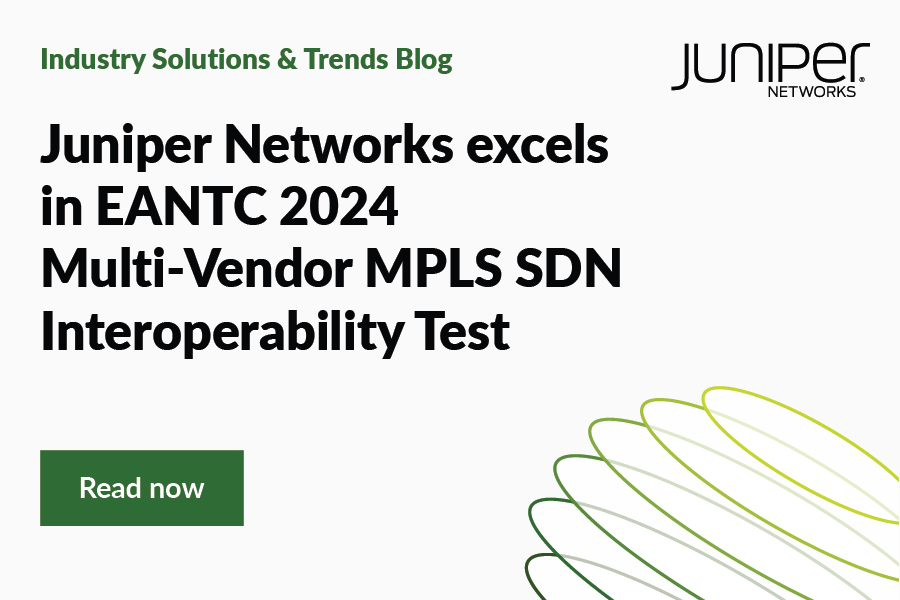This is the first blog in a six part series on Segment Routing (SR) and SR Controllers.
Network operators are under increasing pressure to rapidly deploy services with more stringent SLA requirements and increased resiliency while reducing overall network complexity. Many are considering deploying or have already deployed traffic engineering in their networks. However, traffic engineering isn’t easy – as the network grows and the number of paths increases, management can become quite complex. By removing the need for additional TE protocols in the network, new technologies like Segment Routing (SR) can help. But is SR alone enough?
In this blog, we will discuss how Segment Routing, when paired with an SDN controller, such as Juniper Networks’ NorthStar Controller, can help simplify SR deployments, reduce the complexity often associated with traffic engineering network planning and operations and improve overall network and service reliability.
Introduction to NorthStar
Let’s start with a brief overview of the Juniper NorthStar Controller. NorthStar is Juniper’s Segment Routing controller for the Wide-Area Network (WAN). It creates Traffic-Engineered Label-Switched Paths (LSPs) across the network with fully automated management. For example, when a link fails or when congestion is detected, NorthStar modifies the paths of the LSPs without human involvement. This greatly reduces the amount of manual work needed to operate the network, improves overall network and service reliability and is a key stepping stone toward the Self-Driving Network™.
How does NorthStar work?
Let’s look at how NorthStar works in Figure 1. NorthStar receives inputs from three sources, as shown by the blue arrows:
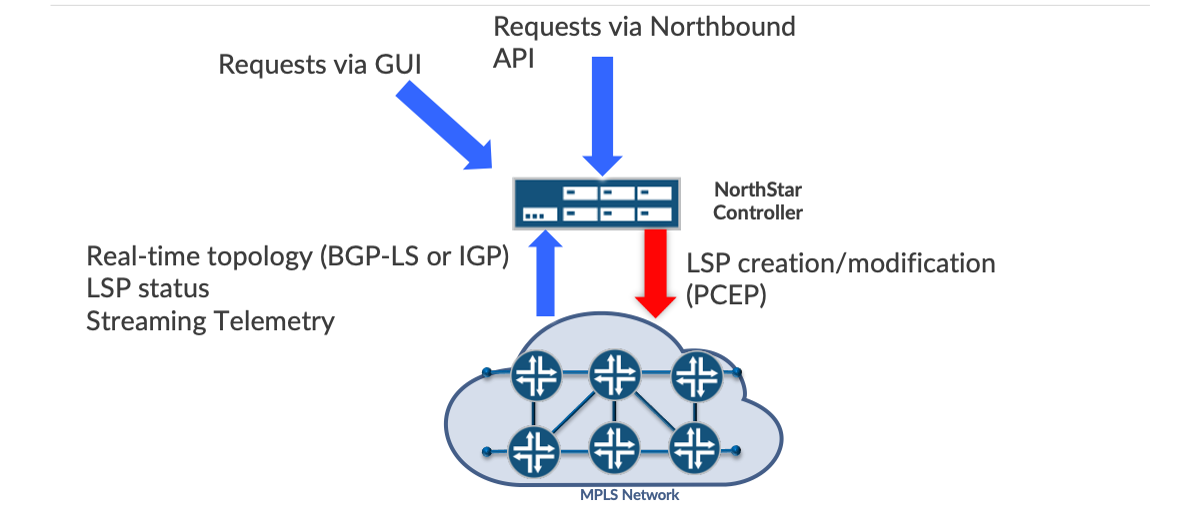
- (i) Input from the network: NorthStar is closely coupled to the live network to provide or enable? real-time visibility of what is happening in the network. As an extension of the control plane of the network, it takes an active part in controlling the network, rather than being a passive Network Management System (NMS). It sees the topology of the network via BGP-LS or IGP peering. This peering provides NorthStar the layout of network links, nodes and their attributes, such as link bandwidth, IGP metrics, SRLGs and Segment Routing SIDs. If there is a change, such as a link going down, it triggers an immediate BGP-LS update or IGP update to NorthStar, so that NorthStar can take direct action. NorthStar also receives PCEP reports from the ingress routers of the LSPs, so that NorthStar knows the status of the LSPs, for example, whether an LSP is currently up or down. In addition, NorthStar receives telemetry information from the network. This includes information on how traffic is traveling on each link and how much traffic is entering each individual LSP. NorthStar also receives information about the current latency of each link.
- (ii) Input via GUI: NorthStar receives inputs from a human operator via a graphical user interface, for example, requirements for traffic engineered LSPs such as bandwidth, selecting provisioning protocols like PCEP and NETCONF and more.
- (iii) Input via REST API: NorthStar receives inputs via a REST API. Anything that can be requested manually via the GUI can be requested via REST API calls, which enables NorthStar to be integrated with network orchestrators or other automation applications.
On the basis of these inputs, NorthStar makes decisions about the paths traffic engineered LSPs should take across the network. These LSPs can be Segment-Routed LSPs or RSVP LSPs. It can modify the paths of existing LSPs and can create new ones from scratch. It does this by using the PCEP protocol to signal the full details of the path to the ingress router, including the name of the LSP, the IP address of the egress node and the sequence of hops that NorthStar wants the LSP to follow across the network.
NorthStar and Segment Routing
In the segment-routed case, the PCEP message sent by NorthStar can contain the adjacency SID associated with each hop. This pins the LSP to a specific path (see Figure 2). Alternatively, the PCEP message can contain loose hops denoted by node SIDs to take advantage of ECMP within the network. The ingress router reacts to the PCEP message by installing the segment routed path in its routing and forwarding tables pointing to the destination node. It also sends a PCEP message to NorthStar informing it that the LSP is now up and running, which provides confirmation that NorthStar’s intentions have been met.
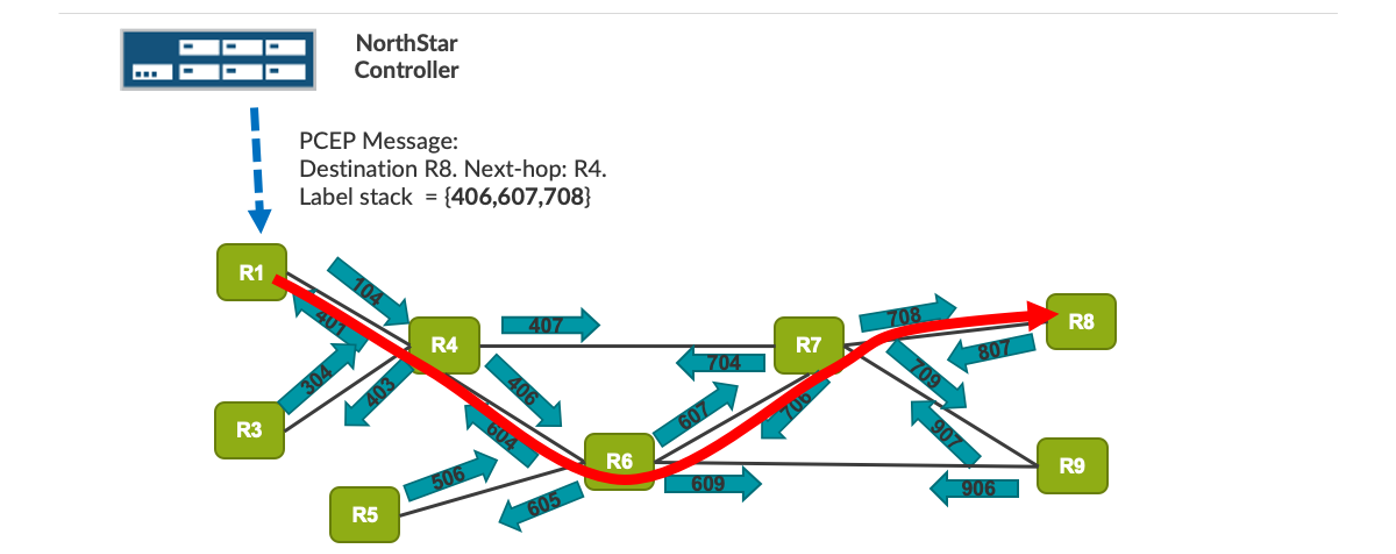
NorthStar’s capabilities make life a lot easier for the operator. It creates and manages the segment-routed LSPs, whereas traditional methods require computing the paths manually with pen and paper and hand-configuring the LSPs on the routers.
Key Capabilities of NorthStar
Let’s look at some of NorthStar’s key use cases:
- Diverse Path Computation: For highly resilient services, NorthStar can compute diversely routed pairs of LSPs. This means that if a network element fails, at most only one of the LSPs would be affected, while the other is still up and running and available to carry traffic.
- Closed-Loop Automation: NorthStar plays a significant role in Closed-Loop Automation, thus providing a key stepping-stone towards the Self-Driving Network™. This is illustrated in Figure 3. NorthStar computes the paths of LSPs according to the user requirements and instantiates them across the network. However, the network is not a static entity; it’s more like a living being, prone to disturbances such as links going down or traffic patterns changing and threatening to cause congestion. The protocols described earlier, combined with streaming telemetry, give NorthStar high visibility into what is happening in the network at any given time. These comprise the feedback loop to NorthStar, which tunes the paths of the LSPs according to the observed conditions. In future blogs, we will demonstrate how NorthStar uses Closed-Loop Automation to keep minimum latency LSPs on the minimum latency path and how it achieves Automated Congestion Avoidance (ACA).
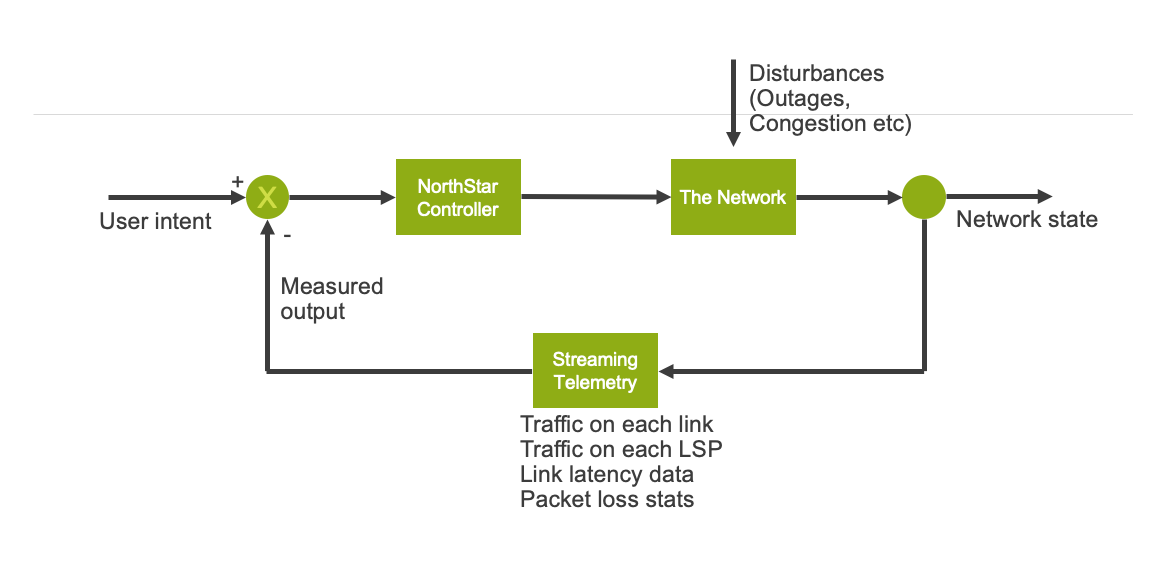
- Automated Network Self-Healing: When Juniper HealthBot, a highly automated data collection and network analytics tool, detects that a network element is running sub-optimally, it can automatically request NorthStar to reroute all of the LSPs that are passing through that element. This scheme is especially useful for dealing with insidious “gray failures” that often go unnoticed.
Summary
NorthStar brings a high degree of automation to the WAN. We will examine several of its key use cases in future blogs.
Watch this video to see how NorthStar works in detail.
Additional Resources
- NorthStar Webpage
- Video Series: 7 Ways to Simplify Your Network with NorthStar and Segment Routing
- Segment Routing Webpage
